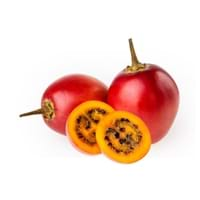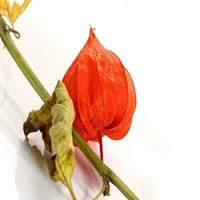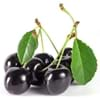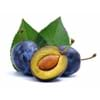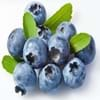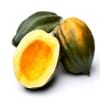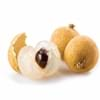Health Benefits
Cancer prevention, Improves eye vision, Prevents diabetes, Prevents high blood pressure
Anti-oxidant properties, Anti-inflammatory properties, Cancer prevention, Maintains healthy cholesterol level, Reduces blood circulation problems, Treatment of cough, fever & sore throat, Treatment of Hypertension
General Benefits
Cures inflamed tonsils, Helps in weight loss, Maintains healthy cholesterol level
Treatment of asthma, Treatment of cataract, Treatment of hepatitis, Treatment of macular degeneration, Treatment of neurodegenerative diseases
Skin Benefits
Anti-aging benefits, Protects skin from oxidative stress
Treatment of Rheumatism & Dermatitis, Treatment of Skin Inflammation
Hair Benefits
Protects hair
Unknown
Allergy Symptoms
Anaphylaxis, Coughing, Diarrhea, Eczema, Hives, Itching sensation in throat, Nausea, Skin Rashes, Runny nose, Sneezing, Swelling of mouth, tongue or lips, Vomiting, Wheezing
NA
Side Effects
Heart burn
Hypertension, Ventricular Tachycardia
Best Time to Eat
Along with meal, As a snack in the late afternoon, Don't consume at night and before bed, Don't eat after meal, Morning time (before lunch)
As a snack in the late afternoon, Eat the fresh ones, avoid mixing with any other foods, don't eat after meal., Morning time (before lunch), Strictly avoid empty stomach
Vitamin B5 (Pantothenic Acid)
Not Available
Vitamin B6 (Pyridoxin)
Not Available
Vitamin B9 (Folic acid)
Not Available
Vitamin C (Ascorbic Acid)
Vitamin K (Phyllochinone)
Not Available
Lutein+Zeaxanthin
Not Available
Phytosterol
Not Available
Water Content
Not Available
Calories in Fresh Fruit with Peel
Not Available
Calories in Fresh Fruit without Peel
Not Available
Calories in Frozen Form
Not Available
Not Available
Calories in Dried Form
Not Available
Calories in Canned Form
Not Available
Type
Fruit vegetable
Fruit vegetable
Season
All seasons
Spring, Summer
Varieties
Tamarillo bold gold, Tamarillo red beau, Tamarillo tango and Tamarillo teds red
Physalis franchetii, Physalis pruinosa, Physalis peruviana, Physalis heterophylla and Physalis philadelphica
Color
Orange, Red, Yellow
Bright Yellow, Orange
Inside Color
Creamy Yellow
Orange
Origin
South Africa
Chile, Peru
Soil Type
Sandy loam, Well-drained
NA
Climatic Conditions
Rainfall, Warm
NA
Facts about
- Up until 1967, tamarillos were referred to as tree tomatoes.
- The name tamarillo is derived from Maori word 'tama' which means leadership and rillo from spanish word 'amarillo' which means yellow.
NA
Top Producer
New Zealand
NA
Other Countries
Australia, Chile, Colombia, Malaysia, Peru, Philippines
NA
Top Importer
United States of America
Netherlands
Top Exporter
New Zealand
Colombia
Botanical Name
Solanum betaceum
Physalis Peruviana
Synonym
tree tomato, genus Cyphomandra, Cyphomandra
Alkekengi, Herschellia & Pentaphitrum
Subkingdom
Tracheobionta
Tracheobionta
Division
Magnoliophyta
Magnoliophyta
Class
Magnoliopsida
Magnoliopsida
Subclass
Asteridae
Asteridae
Order
Solanales
Solanales
Family
Solanaceae
Solanaceae
Species
Solanum betaceum
Physalis
Generic Group
Nightshade
Not Available
Difference Between Tamarillo and Physalis
We might think that Tamarillo and Physalis are similar with respect to nutritional value and health benefits. But the nutrient content of both fruits is different. Tamarillo and Physalis Facts such as their taste, shape, color, and size are also distinct. The difference between Tamarillo and Physalis is explained here.
The amount of calories in 100 gm of fresh Tamarillo and Physalis with peel is Not Available and 77.00 kcal and the amount of calories without peel is 31.00 kcal and Not Available respectively. Thus, Tamarillo and Physalis belong to Low Calorie Fruits and High Calorie Fruits category.These fruits might or might not differ with respect to their scientific classification. The order of Tamarillo and Physalis is Solanales and Solanales respectively. Tamarillo belongs to Solanaceae family and Physalis belongs to Solanaceae family. Tamarillo belongs to Solanum genus of Solanum betaceum species and Physalis belongs to Physalis genus of Physalis species. Beings plants, both fruits belong to Plantae Kingdom.
